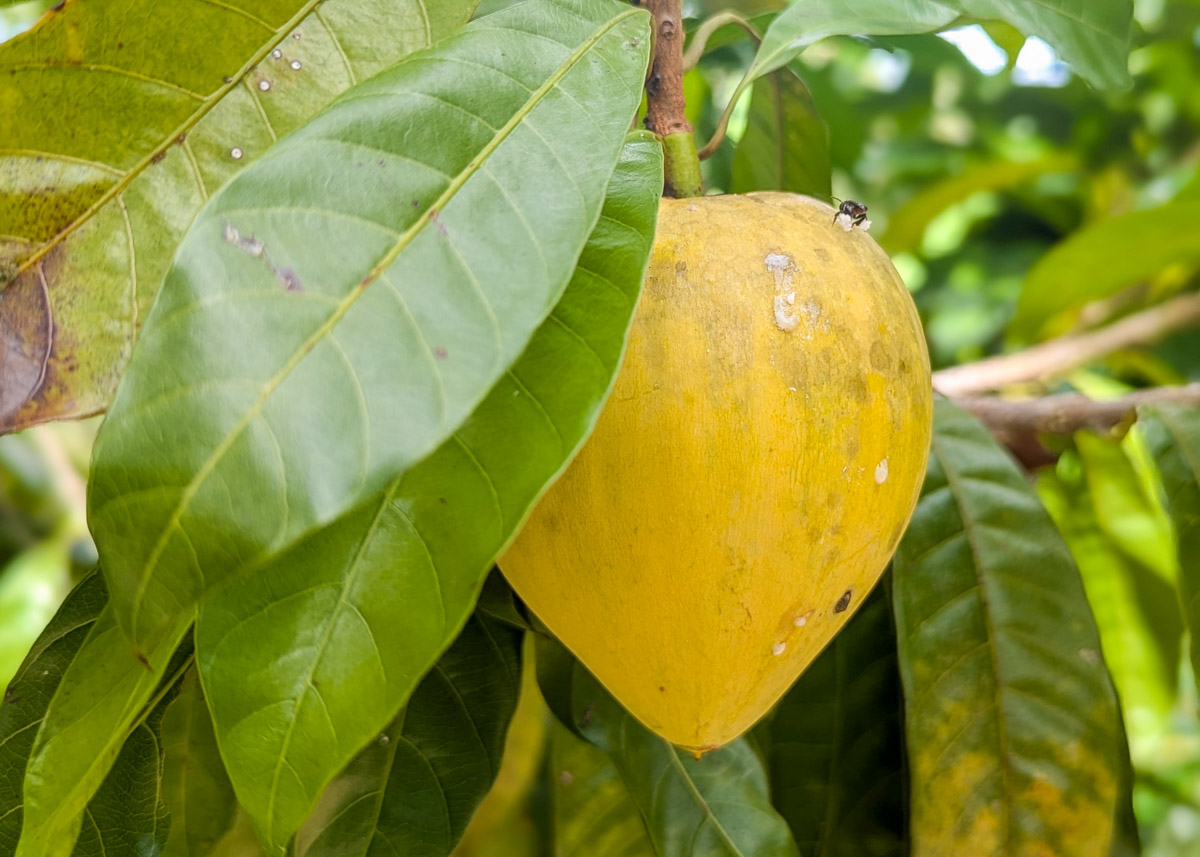Take a guided tour and discover your new favourite fruit at Penang Tropical Fruit Farm. Home to the largest collection of fruit in Southeast Asia, this is a calm and picturesque place overlooking a less-visited part of the island.
The tropical Penang climate is ideal for growing a wide variety of fruit and, hidden away in the northwest corner of the island, you’ll find Penang Tropical Fruit Farm, home to the largest collection of fruit in the whole of Southeast Asia.
Over the 30+ years the orchards have been in operation, the list of fruits grown here has gradually increased, bolstered by imports from around the world. It’s now a relaxing and informative place for tourists to visit, not only to learn about the different types of fruit, but also to taste and sample honey and fruit enzymes, all in a stunning location 800ft above sea-level.

Arriving to Penang Tropical Fruit Farm
There’s no escaping the fact that Penang Tropical Fruit Farm is a long way from everything else on the island. It even feels like a trek from ESCAPE and Entopia, which themselves are far removed from most of the other tourist destinations on Penang Island.
It’s easy enough to get a Grab to the Tropical Fruit Farm and, unless you have your own vehicle, it’s the only option as the buses don’t make it this far. Getting away from the farm is a different story, but more on that later.
The spacious car park is at the end of a very steep hill and is right outside the reception area. Here you’ll find a friendly welcome at the ticket windows, where the staff will explain the various ticketing and tour options to you.

How much does it cost and what are the opening hours?
Most visitors to the farm take the thirty minute guided tour of the orchards and surrounding area. It includes a ride in the back of a truck to and from the reception area.
The tour is priced at RM28/18 for Malaysian adults/children and RM48/38 for non-Malaysians. If you want to add on the fruit juice and fruit plate at the end of the tour, it’s an extra RM10 per person.
Guided tours run from 9.00am to 5.00pm, seven days per week and include the tour itself, enzyme tasting, honey tasting and multiple fruit samples throughout the tour.

Entrance options, tour or self-guided? Do you need to book?
There isn’t a self-guided option for the farm itself, but some people do come to the fruit farm to take in the views from the café seating area with a bite to eat or fruit smoothie. It’s quite popular with cyclists and the café/shop are open to the public.
Otherwise, if you want to see the farm, you do need to book onto a tour. Their online booking system is slightly confusing because it offers specific slots to book onto but, in practice, these aren’t the actual times of the tour. Instead, it’s much more ad hoc and you’ll depart when a tour guide is available, although the wait times are seldom very long.
The website mentions that you don’t need to book on weekdays but that it’s recommended to do so on weekends. Again, this didn’t really seem to be the case and it’s easier to arrange everything in person when you arrive. On top of this, the website seems to struggle with online payments.
Tips for visiting
- Bring a hat and sunscreen as there are some exposed sections on the tour.
- It’s fairly accessible as you’re taken by truck from the start and finish. For the most part, the tour stays on solid tarmac, so it’s manageable for people with limited mobility or if you wanted to bring a pushchair for little ones (although a back-carrier would be better).
- English is the default tour language, but Mandarin, Cantonese, Arabic, Malay and Indonesian guides are usually available on request.
- Apply any mosquito repellent before you arrive as the farm tries to be as chemical-free as possible.
- Drinks and snacks are available before and after the tour.
- Plan to have lunch afterwards as the views from the cafe area are beautiful.

What to expect on the tour
Starting from the reception area, you first board a truck for the short journey up the hill to the beginning of the tour. The ride only lasts for a couple of minutes, but it’s a fun way to get your bearings around the farm and see some of the fruit trees that line the road.
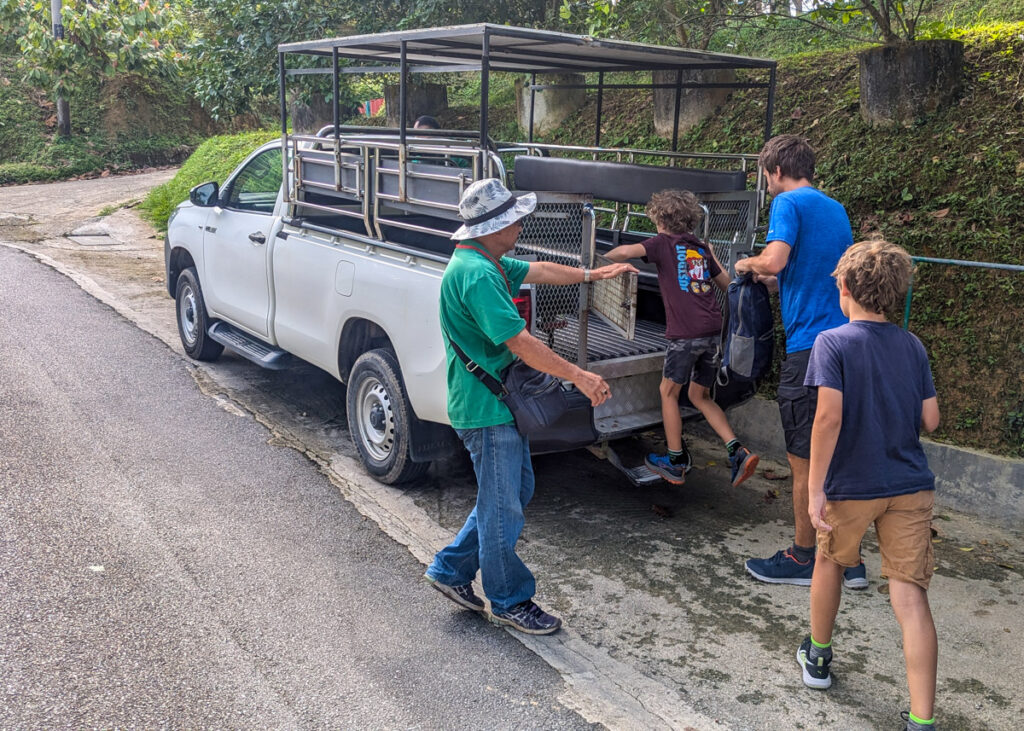

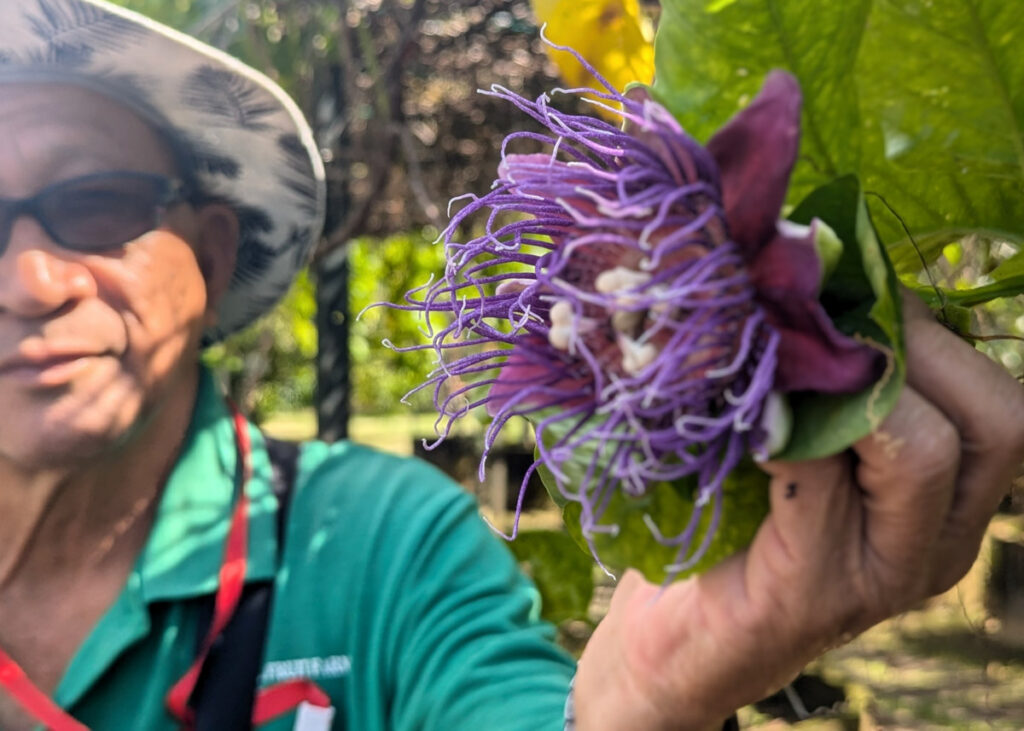
The tour guides are passionate, friendly and extremely knowledgeable about the different types of fruit grown here. Their small satchel contains an array of fruit samples, pocket knives and a flip-book, which are brought out at various points on the tour.
As you pass by each fruit tree, the guide will give you a brief explanation of the fruit, its taste, texture and medicinal/health properties, and then offer you the chance to taste it. They’ll be some you’ve tasted before, but there are bound to be some you’re trying for the first time. We were amazed by the aptly named Miracle Fruit; after leaving it in your mouth for a minute, it’ll turn the bitterest lemon into a sweet treat! Quite the miracle.

Towards the end of the tour, you’re shown the fruit enzyme process and how the giant plastic jars are used to turn fruit and sugar into the various concoctions you’ll sample later.
The truck will be waiting for you at this stage, ready to whisk you back down the hill to the reception area.
After your tour
After the tour has finished, you can try some of the fruit enzymes you saw being made earlier on the tour. There are seven or eight to try and they have quite a kick to them, no doubt the result of the multi-year fermentation process. They’re available to buy afterwards if you need a new health regime in the morning: they promise to help with everything from high blood pressure, cancer and bowel movements.

The farm also produces their own tasty honey, which you can try in the shop. The coffee-flavoured one was particularly popular with our group.
If you decided to pay the extra RM10, you can now grab your fruit juice and plate from the counter. We’d recommended taking it out onto the terrace to soak up the views while you enjoy the different pieces of fruit.
Eating and drinks afterwards
The onsite café offers tasty meals, including Western and Malay dishes. It’s a relaxing place to spend time after your tour and you can also order tea, coffee, juices and other soft drinks.

What’s nearby after your visit?
The Tropical Fruit Garden is relatively close to ESCAPE, Penang National Park and Entopia. Everything else is quite a distance from here and you may have some problems getting a Grab for the return journey. Unless one happens to be dropping someone off, you’ll probably need to ask the staff to book you a taxi the old-fashioned way.
We were quoted RM70, which is substantially more than a Grab would have been (RM30-40) but, unless you fancy either a long walk or a long wait, you might need to accept defeat and pay up.
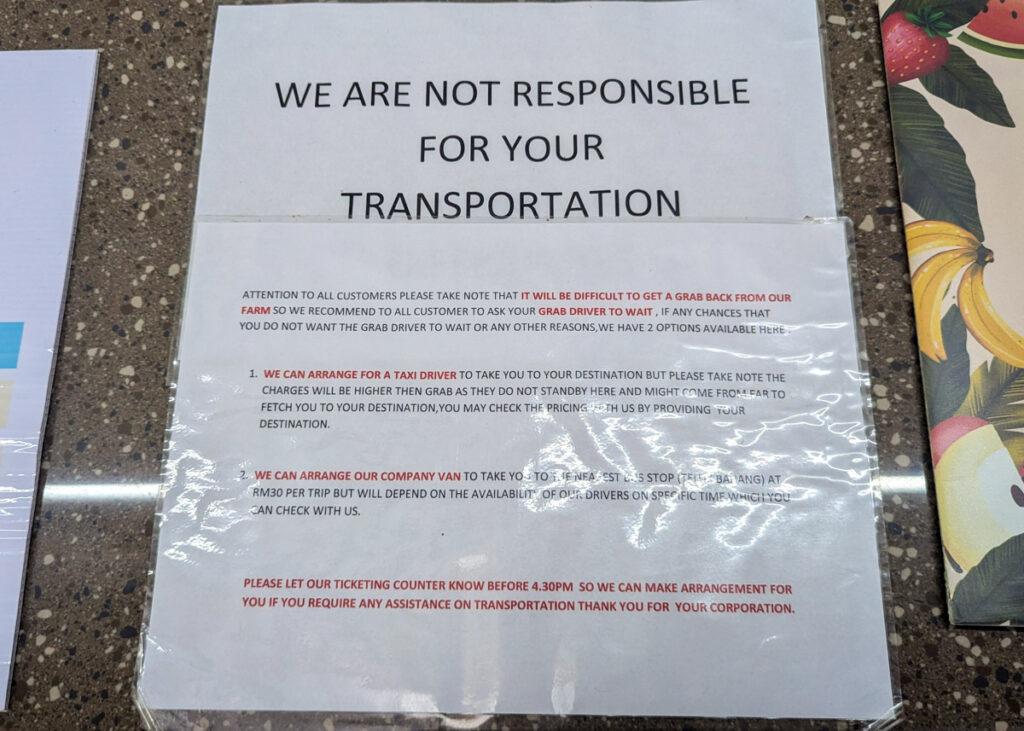
Final thoughts
The Tropical Fruit Farm is worth visiting just for its location, hundreds of metres above sea-level overlooking a quiet and undisturbed part of Penang Island. But once you’re here, the friendly guides bring a passion and experience to their tours, and you’re guaranteed to learn something and (probably) come away with a new favourite fruit.
Despite some difficulty with getting a ride home, a visit here, especially one combined with lunch on the terrace, is a relaxed and memorable stop on any Penang itinerary.

On Penang ebook
New for 2025, the On Penang ebook is the only travel guide you need for exploring the island of Penang. It is jam-packed with inspiration on what to do, where to eat, where to stay, and also includes a step-by-step self-guided walking tour of George Town (with photos).
This is a PDF download for use offline and on the go (and ad-free!). Save it to read on the plane to Malaysia, download to your phone to follow the self-guided walking tour, or print it off at home before you leave on your adventures and highlight all the bits you want to remember for your visit.
-
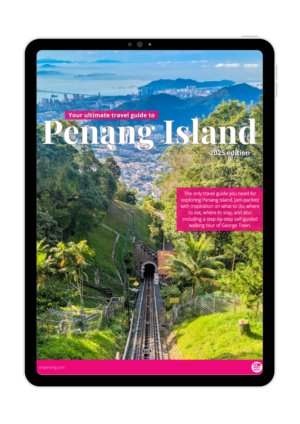 On Penang ebook£16.95
On Penang ebook£16.95
Before your go, check out these useful reads for your visit:
The best things to do in Penang
15 BEST restaurants in Penang
Top tips for visiting Penang
One day Penang itinerary
Best hotels in Penang
How to get around Penang
A brief history of Penang

